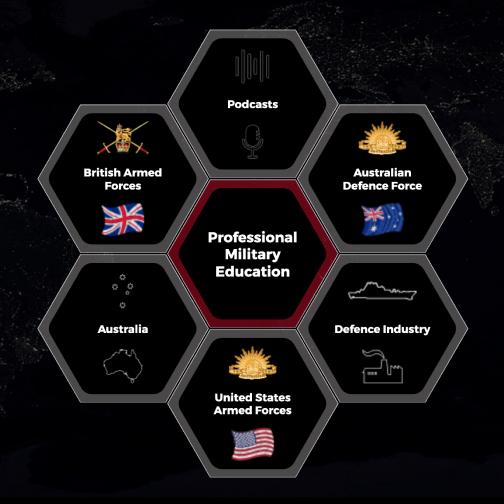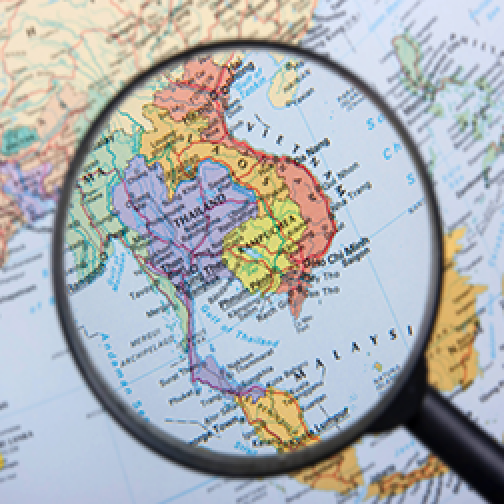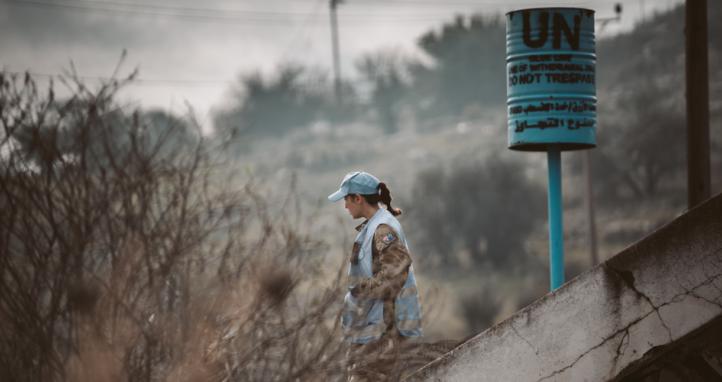Various media outlets, including the British Forces Broadcasting Service, have reported that the UK Strategic Defence Review will recommend the establishment of a new ‘Home Guard’, a part-time volunteer force for the protection of UK critical infrastructure. While this may seem like a rather drastic and old-fashioned response to the current geopolitical challenges in Europe, it would simply align the UK with several other like-minded NATO partners such as Denmark, Sweden, and Norway. This inevitably raises the question – does this hold relevance for Australia, which is similarly grappling with the challenges of home defence?
Although there are few details about the proposal, the UK has had similar schemes in the past. The best known is, of course, the WWII Home Guard, as immortalised in the TV comedy ‘Dad’s Army’. While the scriptwriters had a wide licence, the series captures many features of the Home Guard – volunteers, part-time, based on local units, and with a home defence role. At its peak, the Home Guard had over 1.5 million members and even crewed anti-aircraft guns and rocket projectors. Australia had a similar WWII organisation called the Volunteer Defence Corps.
A more relevant UK example could be the Home Service Force (HSF), which was established at the height of the Cold War in 1982. The HSF was based on the existing reserve Territorial Army (TA), drawing from the pool of former service members of the armed forces.[1] Volunteers up to the age of 60 were permitted to serve. Training was brief, and equipment was basic. However, all recruits had prior military training and were assigned as separate companies to the existing TA battalions, thereby reducing administrative overheads and utilising the established regimental system as an operational structure.
Another example could be the Ulster Defence Regiment (UDR), which was established in the early 1970s for service exclusively in Northern Ireland in response to the terrorist threat in the province. The UDR provided a similar part-time capability to the HSF, although prior military service wasn't required. The UDR conducted mobile patrols, search tasks, and static protection duties, ultimately employing both part-time and full-time staff. At its peak, the UDR had over 7,500 members.[2]
Is any of this relevant to the Army – should Australia raise a Home Guard? The examples above suggest that it is a genuine possibility. In addition to the UK, several Scandinavian countries maintain large Home Guard organisations. Norway’s force reportedly has over 40,000 personnel. The Danish Home Guard (the HJV) comprises over 12,000 active members aged 18 to 80 and is integrated into the nation’s defence structure and culture.[3] Indeed, even Queen Mary of Denmark is an officer in the Home Guard. In modern, affluent countries like Denmark and Norway, Home Guards are not a ‘Dad’s Army'; rather, they represent a real and contemporary answer to the age-old problem of how to protect the homeland with limited human resources.
For a potential Australian Home Guard, the UK models provide solid examples based on a similar Army structure. The Scandinavian Home Guards present many similarities, along with some useful differences, particularly regarding relaxed age and medical standards. Uncrewed air and ground systems may also offer new opportunities, as they are less reliant on the physical strength of operators compared to traditional protective security forces. Additionally, thousands of young Australians leave cadet organisations each year and may be inclined to join a Home Guard if they do not enter the ADF. Using the Danish example, creating an organisation separate from the Army allows the Home Guard to develop simpler training protocols and standards, rather than being constrained by existing doctrine. In an Australian context, this may also facilitate easier integration with tri-service security requirements and state infrastructure protection plans.
Naturally, such a proposal will raise various issues, particularly the concern that a Home Guard could cannibalise existing recruitment pools for both the ADF and state volunteer emergency services. However, a Home Guard is truly about ‘growing the pie’, not reallocating it. Security, training, and physical liability would also be important considerations. Legislative and remuneration options need to be assessed – perhaps a variation of the Cadet Force allowance could serve as a useful starting point. Recruiting will be challenging and will require an acceptance of risk at the point of enlistment. Initial training must be basic but could draw from previous Army Reserve training regimes. Advanced countries like Denmark and Norway demonstrate that these challenges are not insurmountable, and they have effectively utilised such forces for many years.
A Home Guard type organisation offers many advantages for a country with a comparatively small population like Australia.[4] It facilitates access to diverse demographics and work models to enhance the security force. A Home Guard or home defence force would alleviate the Army of numerous home defence tasks, employing enlistees who would otherwise not be part of the security solution. Furthermore, such an organisation would be relatively cost-effective, scalable, and serve as a useful adjunct to the Australian Defence Force's social licence. Regardless of the title, a volunteer part-time security force could be a valid and significant addition to home defence.
End Notes
[1] Dewar, M. A day in the life of the British Army, D&C, Devon UK, 1990
[2] Ryder, C. The Ulster Defence Regiment, Methuen, London, 1991 p. 187
[3] Telecon between author and LTCOL Soren Rich, Danish HJV HQ, April 11 2024
[4] Brennan, J. A security force for the future, Transforming Land Power, p49 Australian Army Research Centre, ACT, 2022.










However, instead of introducing a new organisation, how about strengthening and deepening existing structures - in particular state police and emergency services?
For example, for security and disaster response tasks, the establishment of an auxiliary police unit (essentially a police reserve) would provide additional part-time personnel to the police for emergencies. Such forces exist in places such as Hong Kong and are regularly used for both emergency work and security tasks. The advantage is you leverage off existing facilities and structures, have a simpler training load (commensurate with their limited mission) but also have all the existing legal powers of the police (eg to stop, arrest, etc) which the military does not have.
Likewise, improving recruiting, funding and facilities to current emergency services (including paying them!) could add to the States' ability to deal with natural disasters but without the need to create another organisation.
In short, I fully agree with you that we need to increase participation in home defence, security and disaster relief but perhaps existing structures can be improved rather than creating a new one?
As a retired police officer, I too am drawn to the idea of a National Constabulary or Gendarmerie, perhaps as an offshoot of the AFP. However, I would suggest that will only provide a very small portion of what we need and is very unlikely to simplify the training load if they are truly to have police powers. Not that it is a bad idea. Other nations do have reserve police (Singapore is a good example), but they are generally a unitary state, not a federation. Having commanded JTFs in two different jurisdictions, the challenges of dealing with organisations that may not be politically aligned with the C'wth led me to the idea of a 'national Home Guard' rather than boosting existing structures. We saw during Covid that some states may not fully support the national endeavour. Emergency Services (ES)will not always be willing to work in a war zone or with allies, for both practical, political and industrial relations reasons. We cannot easily increase the size of our reserves (see Mike Kalms recent article) under current recruiting and training arrangements. The Home Guard offers a possible option to grow the security pie to protect people and facilities, in support of the national defence effort. Any benefits in terms of disaster relief are a bonus, but should not be a major factor, because as you rightly identify, that is a largely a state matter. If the states choose to grow their ES, all the better! Thanks for the interest. Happy to discuss further.
Because of this, all the ideas in both E-mails have merit. It is better to prepare now than later under threat.
Frankly, any idea that Australia can recruit or pay for a major sized, permanent Army is unrealistic. Australian needs to admit this and strengthen the ARes and, most likely, it will also be necessary to introduce conscription.
I cannot imagine that the idea of conscription in any form is contemplated in Army HQ?
Good luck finding today any politician who would even contemplate implementing or even discussing your ideas.
I think you have identified the problem nicely - 'all available manpower'. The idea will be to, as you say, prepare now rather than later. And perhaps that is why such a scheme might actually be attractive to our political masters. It relies on volunteers not conscripts, and is relatively cheap. You will have had experience with our last conscription effort. We do need to increase the size of the ARes, but that alone may not deliver all we need. Hence the above.
There is limited evidence that senior leadership is fully committed to integrating the current part-time force, making it unlikely a new force would be prioritised, resources or integrated. Civilian agencies already encounter challenges working with Defence; the role and governance of a Home Guard would need to be clearly defined to avoid duplication or confusion.
All existing volunteer services (SES, RFS, CFA etc) are experiencing recruitment difficulties. A new force could strain the national volunteer base. Many potential volunteers have personal also hold values that may not align with Defence’s culture, strategic alliances, or demographic makeup.
Unlike the more ethnically and culturally homogeneous societies of Scandinavia or post-WWII Britain, modern Australia is highly multicultural, with over 30% of citizens born overseas. The UDR was 95% + Protestant composition and faced legitimacy challenges due to its narrow demographic base. Until the ADF more closely reflects the diversity of the communities it serves—and simplifies its structure and pathways—recruitment for any new initiatives will have poor outcomes.
All very good points that highlight just some of the challenges we face. And you are very correct about gaining leadership support and the legislative challenges. And yes, some of the potential volunteers might appear sub-optimal - but isn't that the challenge of diversity that you raise? The Home Guard is potentially exactly what you seek - more closely reflecting the diverse community it serves, with simpler structures and pathways, cutting away that complexity you rightly identify.
The UDR was indeed Protestant. And it fielded 56 companies from a protestant population of around 1.5 million despite the risks to individuals off-duty. Sweden has a foreign-born population rising past 14%. Denmark is not far behind. Many of our excellent and enthusiastic ADF recruits already come from CALD backgrounds. The takeaway is that ultimately, we must deal with the cards we have.
And yes, it might eat into the existing volunteer services. If it only takes 10% of their numbers, we still end up with a sizable adjunct security force. I know that is not what you meant- but in times of great need, we need to better use our people resources as a nation.